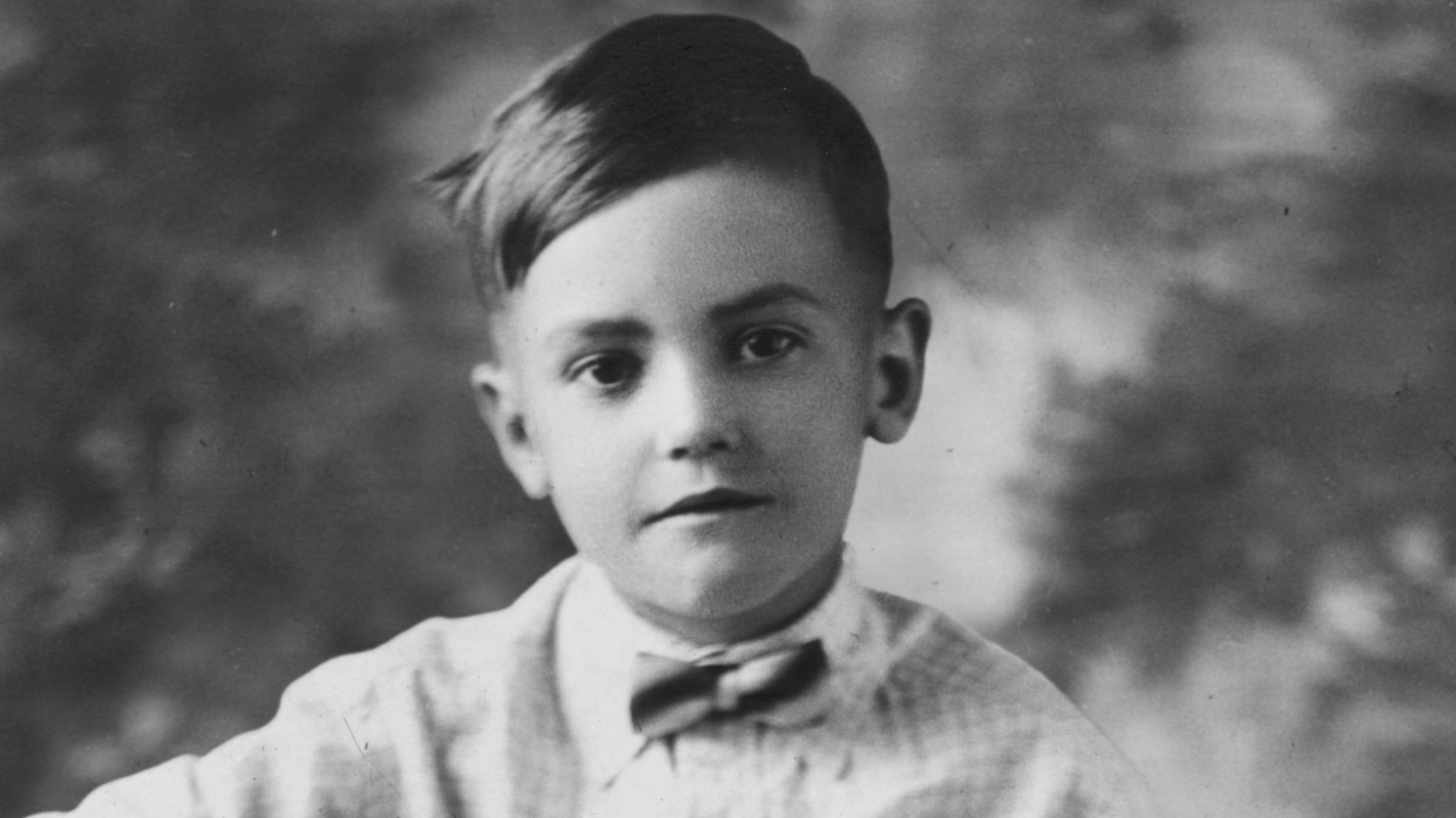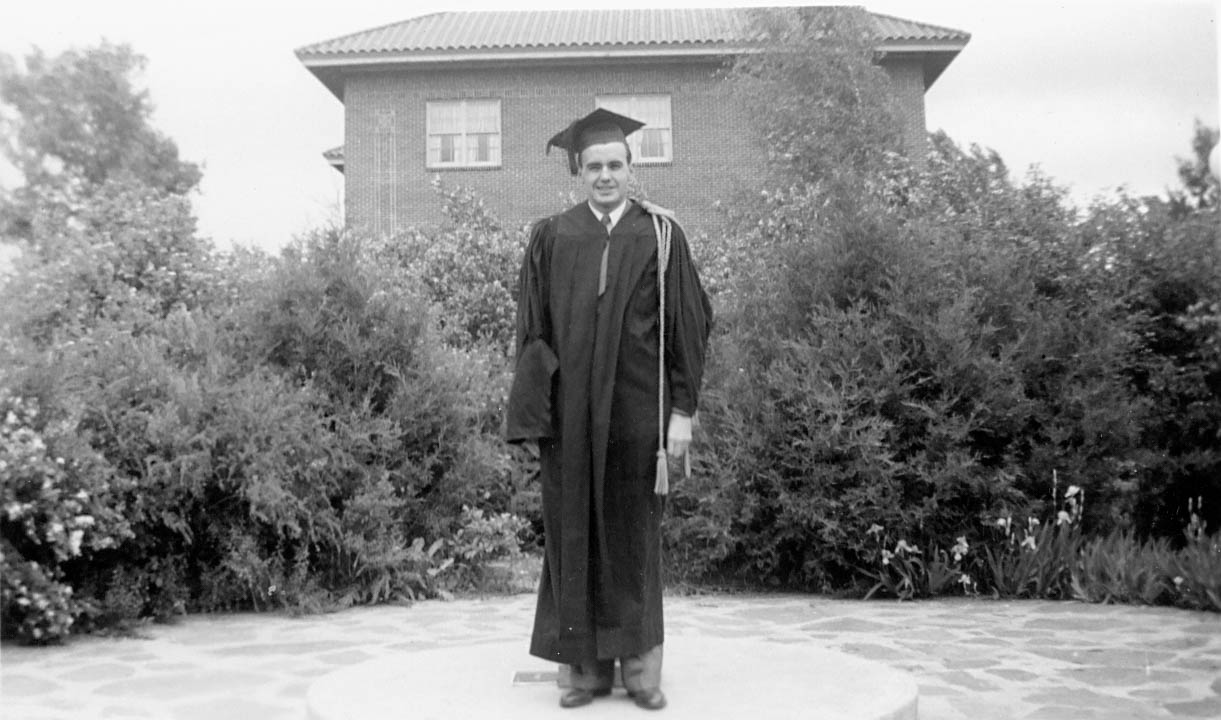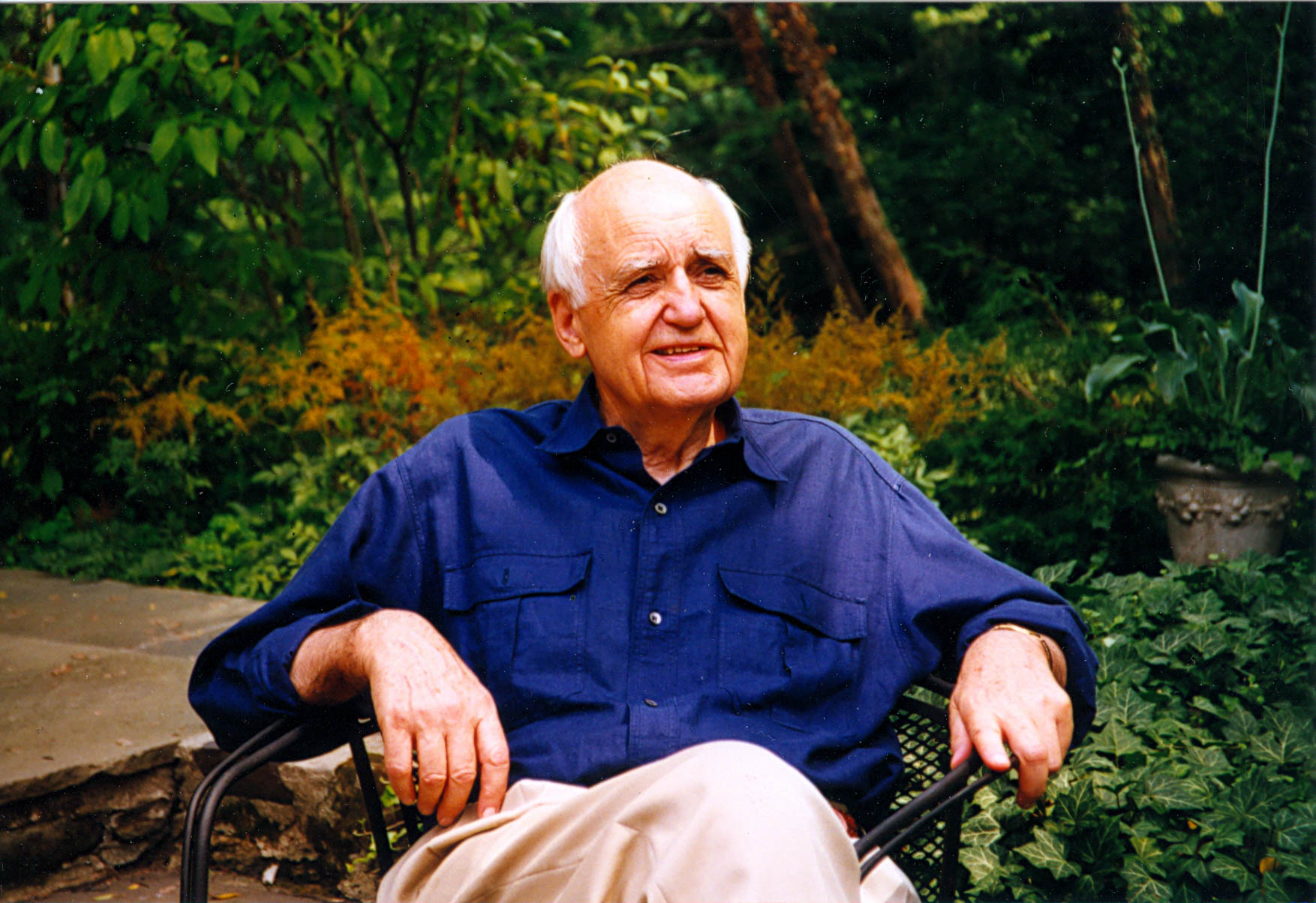About Dr. Maurice Hilleman
Dr. Maurice Hilleman is considered by many to be the father of modern vaccines. Over the course of his career, he developed many of the vaccinesthat are routinely recommended for children today. By the end of his career, Dr. Hilleman had prevented pandemic flu, combined the measles-mumps-rubella vaccines (MMR), developed the first vaccine against a type of human cancer, and much more. It is likely that Dr. Hilleman’s work has saved more lives worldwide than any other scientist in history.
Early Life
 Maurice Ralph Hilleman was born August 30, 1919, in Miles City, Montana. Maurice’s twin sister and mother died soon after his birth. His mother’s dying wish was to have his sister buried in her arms and to have Maurice raised by his aunt and uncle, Bob and Edith. They lived nearby and had no children. Living near his siblings and biological father, Gustav, gave Maurice a different experience than that of his older siblings. His adoptive father, Bob, was more open-minded than Gustav. This likely allowed more room for Maurice’s curiosity and intellect to flourish. But, he craved the approval of his biological father. This likely drove Maurice’s lifelong goal to succeed. Even as a young boy, Maurice showed a strong aptitude for science. The writings of Charles Darwin were particularly interesting to the future scientist.
Maurice Ralph Hilleman was born August 30, 1919, in Miles City, Montana. Maurice’s twin sister and mother died soon after his birth. His mother’s dying wish was to have his sister buried in her arms and to have Maurice raised by his aunt and uncle, Bob and Edith. They lived nearby and had no children. Living near his siblings and biological father, Gustav, gave Maurice a different experience than that of his older siblings. His adoptive father, Bob, was more open-minded than Gustav. This likely allowed more room for Maurice’s curiosity and intellect to flourish. But, he craved the approval of his biological father. This likely drove Maurice’s lifelong goal to succeed. Even as a young boy, Maurice showed a strong aptitude for science. The writings of Charles Darwin were particularly interesting to the future scientist.
Education
 Maurice graduated from high school in 1937, and was awarded a scholarship to Montana State College (now Montana State University). He majored in chemistry and microbiology and graduated in 1941 at the top of his class. He furthered his education at the University of Chicago where he studied chlamydia, a common sexually transmitted disease. In the early 1940s, chlamydia was believed to be caused by a virus. But through his doctoral work, Maurice determined that chlamydia was actually caused by a bacterium, which meant that it could be treated with antibiotics. Maurice and one of his professors also taught the first course ever offered in virology at the University of Chicago. In 1943, he married his hometown sweetheart, Thelma Mason.
Maurice graduated from high school in 1937, and was awarded a scholarship to Montana State College (now Montana State University). He majored in chemistry and microbiology and graduated in 1941 at the top of his class. He furthered his education at the University of Chicago where he studied chlamydia, a common sexually transmitted disease. In the early 1940s, chlamydia was believed to be caused by a virus. But through his doctoral work, Maurice determined that chlamydia was actually caused by a bacterium, which meant that it could be treated with antibiotics. Maurice and one of his professors also taught the first course ever offered in virology at the University of Chicago. In 1943, he married his hometown sweetheart, Thelma Mason.
Career
Upon completion of his PhD in 1944, Dr. Hilleman started working at a company called E.R. Squibb & Sons where he developed his first vaccine. The vaccine protected against Japanese encephalitis (JE) virus: the most common cause of encephalitis in the world. Infection with JE virus can lead to swelling of the brain and death. The vaccine was used to protect U.S. troops during World War II.
 In 1949, Dr. Hilleman became the chief of respiratory diseases at the Walter Reed Army Institute of Research in Washington, D.C. His project was to study influenza virus. During this time, Dr. Hilleman made discoveries critical to our understanding of influenza. First, he observed that the influenza virus underwent changes. Sometimes, the changes were small, but other times they could be dramatic. Later, the small changes became known as antigenic drift, and the sudden, major changes became known as antigenic shift. Antigenic shift can result in pandemics because almost no one in the world is immune to the significantly changed virus. Second, Dr. Hilleman realized in 1957, that an influenza pandemic had started in Hong Kong. He was the first person in history to predict a pandemic.
In 1949, Dr. Hilleman became the chief of respiratory diseases at the Walter Reed Army Institute of Research in Washington, D.C. His project was to study influenza virus. During this time, Dr. Hilleman made discoveries critical to our understanding of influenza. First, he observed that the influenza virus underwent changes. Sometimes, the changes were small, but other times they could be dramatic. Later, the small changes became known as antigenic drift, and the sudden, major changes became known as antigenic shift. Antigenic shift can result in pandemics because almost no one in the world is immune to the significantly changed virus. Second, Dr. Hilleman realized in 1957, that an influenza pandemic had started in Hong Kong. He was the first person in history to predict a pandemic.
The result was that he created a vaccine before the virus arrived in the U.S. Between 70,000 and 116,000 deaths in the U.S. occurred as a result of the pandemic. Public health officials estimate that the number of deaths in the U.S. could have reached 1 million had Dr. Hilleman’s vaccine not been available. For this effort, he was awarded the Distinguished Service Medal from the American military. Find out more about Dr. Hilleman’s accomplishments related to influenza by watching this clip from the film.
 At the end of 1957, shortly after his daughter Jeryl Lynn was born, Dr. Hilleman began working for Merck & Co. to oversee their vaccine research and development. He remained at Merck for the rest of his career. Sadly, his wife, Thelma, died in 1963. Dr. Hilleman married Lorraine Witmer the following year. They had a daughter, Kirsten, in 1965. While at Merck, Dr. Hilleman developed vaccines to protect us from chickenpox, hepatitis A, hepatitis B, pneumococcus, meningococcus, measles, mumps, and rubella. He was also the first person to combine viral vaccines when he created the MMR vaccine. With one shot, children could be protected against three diseases (measles, mumps, and rubella).
At the end of 1957, shortly after his daughter Jeryl Lynn was born, Dr. Hilleman began working for Merck & Co. to oversee their vaccine research and development. He remained at Merck for the rest of his career. Sadly, his wife, Thelma, died in 1963. Dr. Hilleman married Lorraine Witmer the following year. They had a daughter, Kirsten, in 1965. While at Merck, Dr. Hilleman developed vaccines to protect us from chickenpox, hepatitis A, hepatitis B, pneumococcus, meningococcus, measles, mumps, and rubella. He was also the first person to combine viral vaccines when he created the MMR vaccine. With one shot, children could be protected against three diseases (measles, mumps, and rubella).
The story of the mumps vaccine is unique because Dr. Hilleman isolated the virus from his daughter, Jeryl Lynn, when she contracted mumps in 1963. By weakening the mumps virus he had obtained from Jeryl Lynn, he was able to make a safe and effective mumps vaccine. The same strain of mumps virus is used to make the mumps vaccine today. It is called the Jeryl Lynn strain. Find out more about this story in a clip from the film.
When he created the hepatitis B vaccine, Dr. Hilleman became the first person to develop a vaccine against a virus that causes liver cancer in people. While at Merck, Dr. Hilleman worked with colleagues to create two versions of the hepatitis B vaccine. Watch this clip from the film to see why. Download a list of vaccines that Dr. Hilleman was central to creating.
Legacy
 Dr. Hilleman retired from Merck in 1984 at the age of 65 as this was the retirement age mandated by company rules. In the years after his retirement, he continued to contribute to science as a consultant and mentor to those still working to stop infectious diseases from harming or killing people around the world. For example, during this time, Dr. Hilleman served as an advisor to the World Health Organization (WHO). In 1988, President Ronald Regan awarded him the National Medal of Science, the highest science award given in the U.S.
Dr. Hilleman retired from Merck in 1984 at the age of 65 as this was the retirement age mandated by company rules. In the years after his retirement, he continued to contribute to science as a consultant and mentor to those still working to stop infectious diseases from harming or killing people around the world. For example, during this time, Dr. Hilleman served as an advisor to the World Health Organization (WHO). In 1988, President Ronald Regan awarded him the National Medal of Science, the highest science award given in the U.S.
Colleagues note that Dr. Hilleman was always more concerned with preventing disease than being recognized for his efforts. Many people remain unfamiliar with Dr. Hilleman’s name, despite the fact that his work has directly impacted their lives. Dr. Hilleman’s work is estimated to save about eight million lives every year.
100 years later: Getting to know the “Man behind the Science”
“Dr. Hilleman saved so many lives and prevented overwhelming sadness and despair. He became a role model for me overnight. This man has now become someone I will look to when I want to give up just because the solution does not feel attainable. Thank you Dr. Hilleman for pushing through the tough times and finding a way to save millions. So many owe their lives to you.” - Gracie B., age 15, MO
“Dr. Hilleman has saved a countless number of lives through his innovation, commitment, and compassion: he is a true hero.” - Alex S., age 17, GA
“When I was younger, I thought of heroes as people like Superman or Batman, but as I mature I realize real heroes are the people who never give up. A hero is a person who works for things greater than themselves, a person who loves life, a person who helps heal others, and a person who does the right thing regardless of the situation. Dr. Hilleman exemplifies this type of person. He is my hero.” - Annalise B., age 13, MO
One hundred years after the birth of Dr. Hilleman, students continue to be inspired by his scientific accomplishments, as shown in the quotes above. But beyond his scientific achievements, Dr. Hilleman’s friends and family remember a doting husband, an adoring father, and a dedicated colleague and mentor. The short film, Maurice Hilleman: The Man behind the Science, offers a look at Dr. Hilleman through the personal memories of those closest to him. Watch Maurice Hilleman: The Man behind the Science, to find out more through personal stories, humorous anecdotes, and poignant observations, shared by some of those who knew him best.
Watch Maurice Hilleman: The Man behind the Science.
For a more comprehensive look at Dr. Hilleman’s life and scientific accomplishments, check these resources:
HILLEMAN: A Perilous Quest to Save the World’s Children – This one-hour, award-winning documentary highlights Dr. Hilleman’s life and accomplishments related to vaccine development history. For more information about how to get the film, check The Film page.
Vaccinated: One Man’s Quest to Save the World’s Children – This biography of Dr. Hilleman, written by VEC director, Dr. Paul Offit, was published in 2007 by Harper Collins. Find out more on GoodReads.com.
